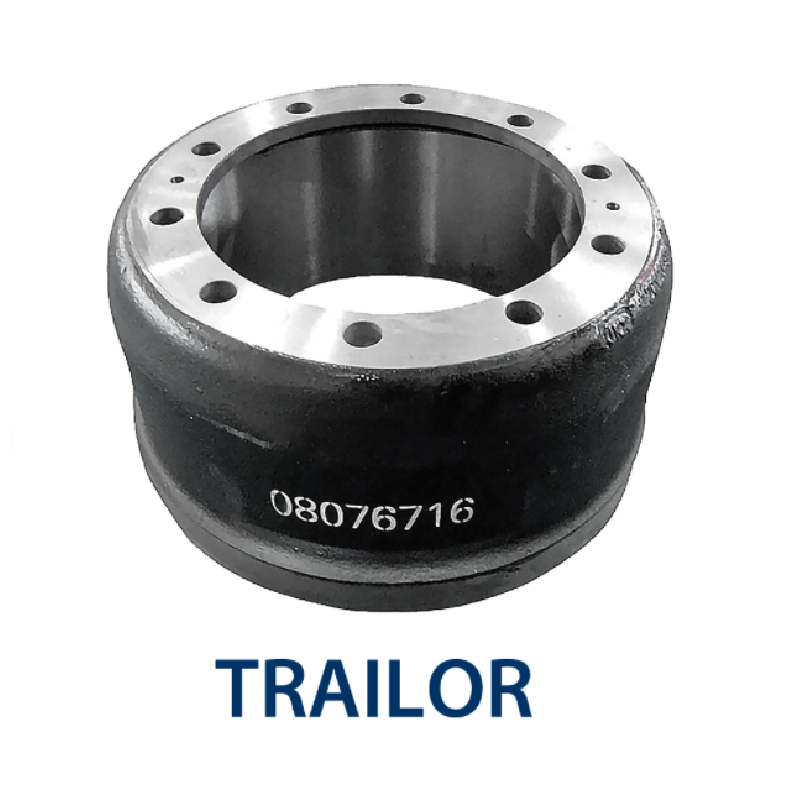Sep . 06, 2024 06:59 Back to list
Changing Brake Drums - A Comprehensive Guide
Changing Brake Drums A Comprehensive Guide
Brake drums are an essential component of a vehicle's braking system, playing a crucial role in ensuring safety while driving. Over time, these components wear out due to constant friction and heat, necessitating their replacement. Understanding how to change brake drums can save you time and money while helping maintain your vehicle's performance.
Recognizing When to Change Brake Drums
The first step in the process is recognizing the signs that indicate it’s time to change your brake drums. Look out for symptoms such as a grinding or squeaking noise when braking, a pulsating brake pedal, or a decreased responsiveness in the brakes. Additionally, if you notice visible grooves or cracks in the drum, it’s time for a replacement. Regular maintenance checks are essential, as they can help catch issues before they turn into more significant problems.
Tools and Materials Needed
Before beginning the process of changing brake drums, gather the necessary tools and materials. You will need
- A jack and jack stands - A lug wrench - A brake drum puller (if needed) - New brake drums and shoes - Brake cleaner - A socket set - A torque wrench - Safety glasses and gloves
Preparing your workspace in advance will ensure a smooth and efficient replacement process.
Step-by-Step Process
2. Lifting the Vehicle Use the jack to lift the vehicle and then secure it with jack stands. Never work under a vehicle supported only by a jack.
changing brake drums

3. Removing the Wheel Use the lug wrench to remove the wheel covering the brake drum. Turn the lug nuts counter-clockwise until they've all been removed.
4. Inspecting the Brake Drum With the wheel removed, inspect the brake drum for any damage. If the drum is warped or excessively worn, it should be replaced.
5. Removing the Brake Drum If the drum does not come off easily, you may need a brake drum puller. Attach the puller and slowly turn it until the drum releases. Be cautious as it might come off suddenly.
6. Replacing Brake Shoes Once the drum is removed, take this opportunity to inspect and, if necessary, replace the brake shoes. Remove the old shoes and install new ones, following the manufacturer's recommendations.
7. Installing the New Brake Drum Place the new brake drum onto the hub, ensuring it fits securely.
8. Reassembling the Wheel Reattach the wheel, tightening the lug nuts by hand first and then using the torque wrench to ensure they are tightened to the manufacturer’s specifications.
9. Lowering the Vehicle Carefully lower the vehicle back to the ground and remove the jack stands.
10. Final Checks Before driving, pump the brake pedal a few times to ensure the brake shoes are properly seated against the new drum.
Conclusion
Changing brake drums may seem daunting, but with the right tools, materials, and a systematic approach, it can be a straightforward task. Proper maintenance of your vehicle’s braking system not only extends the lifespan of its components but also significantly enhances your safety on the road. Always consult your vehicle's service manual for specific instructions and specifications, and if in doubt, don't hesitate to seek professional assistance. Regular checks and timely replacements are key to keeping your brakes in optimal condition.
-
Premium Brake Drum Iveco – Durable Drum Brake Drum & Brake Shoe Solutions
NewsJul.08,2025
-
High-Performance Brake Drum Liza for Enhanced Safety Reliable Drum Brake Drum & Brake Shoe Solutions
NewsJul.08,2025
-
High-Quality Brake Drum MAZ – Durable Drum Brake Drum & Brake Drum and Brake Shoe for Optimal Performance
NewsJul.07,2025
-
High-Quality Brake Drum Kamaz for Reliable Performance Durable Drum Brake Drum & Brake Shoes
NewsJul.07,2025
-
High-Quality Brake Drum Kamaz for Reliable Performance Durable Drum Brake Drum & Brake Shoe Replacement
NewsJul.07,2025
-
Brake Drum Man - High-Quality Drum Brake Drum & Brake Drum and Brake Shoe Solutions
NewsJul.06,2025
